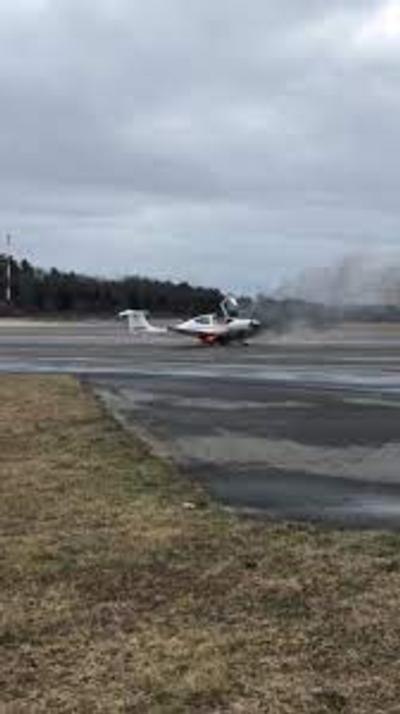Sun, Jan 01, 2023

Location: Portsmouth, New Hampshire
Accident Number: ERA21LA099
Date & Time: Jan 3, 2021
Aircraft: N489RS
Event: Fire/Smoke, Non-impact
Injuries: None
Flight Conducted Under: Part 91, Instructional
The NTSB has completed a report regarding a Diamond DA-40 wheel fire that occurred last year. The long and short of things is that the instructor, performing an aircraft checkout for one of the school’s frequent piper renters, used an excessive amount of braking in the landing roll that led to a small fire. Everyone has been there before, when the meter’s running and the temptation to hurry up and turn around in order to minimize time wasted taxiing an aircraft around.
NTSB Analysis:
“After landing, the flight instructor assumed control of the airplane during the roll, taxied to the hold-short line at the approach end of the runway, and waited for landing traffic. Soon after, the pilot of the landing airplane announced over the tower radio frequency that the airplane holding short was “on fire.” The instructor confirmed that smoke was rising from beneath the right wing and both he and the pilot receiving instruction egressed the airplane without injury.

Examination of video revealed fire emanating from the right main landing gear wheel and brake assembly, wheel pant, and involved the right wing, which was substantially damaged.
Data downloaded from the airplane’s multifunction display revealed high groundspeeds during taxi after landing, and rapid decelerations consistent with hard braking actions before the airplane reached the hold short line. Postaccident examination revealed normal wear of the brake pads and no pre-accident mechanical anomalies. Examination of the fuel cell directly above the right main landing gear wheel and brake assembly revealed that it was intact with no leaks and contained about 15 gallons of fuel. Based on the available evidence, it is likely that the instructor’s high taxi speeds, which required multiple brake applications, resulted in the right brake assembly overheating and catching fire.”
More News
From 2023 (YouTube Version): Legacy of a Titan Robert (Bob) Anderson Hoover was a fighter pilot, test pilot, flight instructor, and air show superstar. More so, Bob Hoover was an i>[...]
Get The Latest in Aviation News NOW on Instagram Are you on Instagram yet? It's been around for a few years, quietly picking up traction mostly thanks to everybody's new obsession >[...]
Aero Linx: B-52H Stratofortress The B-52H Stratofortress is a long-range, heavy bomber that can perform a variety of missions. The bomber is capable of flying at high subsonic spee>[...]
Altimeter Setting The barometric pressure reading used to adjust a pressure altimeter for variations in existing atmospheric pressure or to the standard altimeter setting (29.92).>[...]
"Knowing that we play an active part in bettering people's lives is extremely rewarding. My team and I are very thankful for the opportunity to be here and to help in any way we ca>[...]
 Classic Aero-TV: Remembering Bob Hoover
Classic Aero-TV: Remembering Bob Hoover ANN FAQ: Follow Us On Instagram!
ANN FAQ: Follow Us On Instagram! ANN's Daily Aero-Linx (05.15.24)
ANN's Daily Aero-Linx (05.15.24) ANN's Daily Aero-Term (05.15.24):Altimeter Setting
ANN's Daily Aero-Term (05.15.24):Altimeter Setting Aero-News: Quote of the Day (05.16.24)
Aero-News: Quote of the Day (05.16.24)




